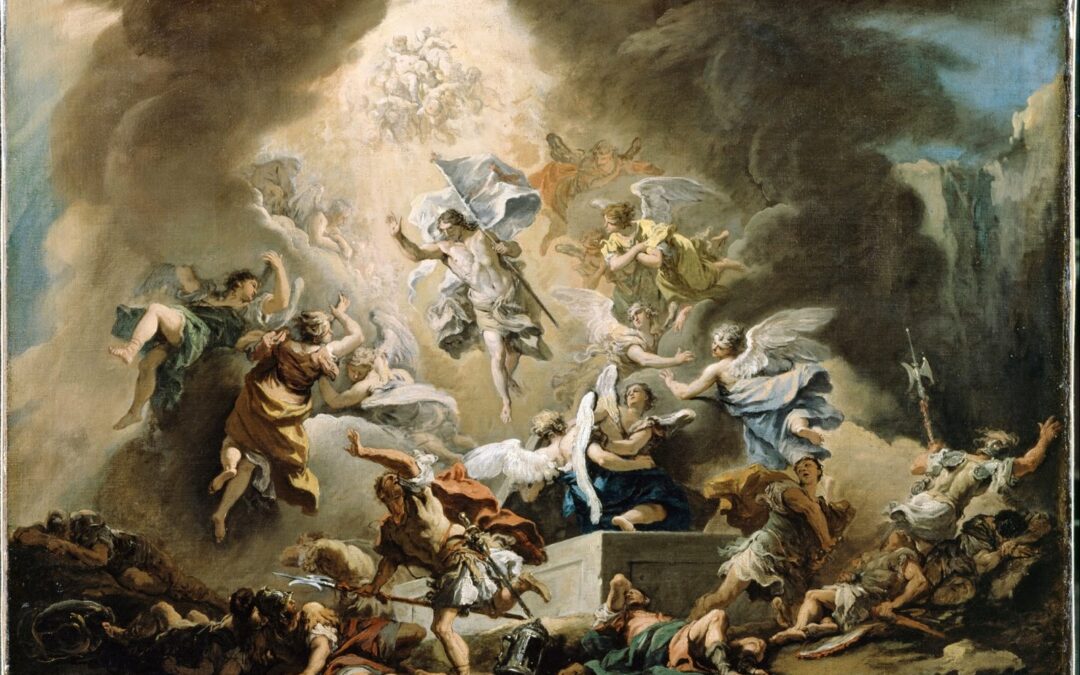A Study of Revelation 20 and other related passages
And though St. John saw many strange monsters in his vision, he saw no creature so wild as one of his own commentators.
G. K. Chesterton
It is difficult to begin a study with Revelation 20. Depending on one’s biblical or systematic theology and the related hermeneutics, Revelation 20 is interpreted differently. Most of the interpretive decisions have already been made prior to reading this chapter. The reader is thus welcomed to the bottom slope of a mountain in the midst of a mighty avalanche. Some of this is due to the reader’s own discipleship. How have they been taught? Who has taught them? Most of this is due to John’s Spirit-led approach to writing this last book of the Bible. In four hundred and four verses John manages to cram anywhere from three to seven hundred Old Testament allusions (depending on your definition of “allusion.”) This is the most biblical book of the Bible. Giving full weight to the contexts of each allusion, interpreting their use in light of Christ, it took me over three years to teach through Revelation verse by verse. We spent a lot of time unpacking the rich, beautiful and Christ-honoring metaphors John consistently used throughout the book. The momentum and depth of the reader’s study in Revelation 1-19 is rewarded in Revelation 20. What you sow, that you reap.
Depending on one’s hermeneutic, (Preterist–Most Prophecy is Past in AD 70; Historicist–Most Prophecy is Past in Western History; Futurist–Most Prophecy is Future in Israel; or Idealist–Most Prophecy is Present in Repetitions of Spiritual Principles), this millennium (only so named here in all of Scripture) is interpreted very differently. Disagreements occur on 1. the meaning of the thousand years, 2. on the meaning of the “first resurrection” in connection with the “second death”, 3. on the nature of Christ’s reign and our participation in that reign, 4. on the nature of Satan’s binding and release, 5. on the state of the nations in rebellion, 6. on the participants of the Great White Throne Judgment and 7. The meaning of the various other metaphors which appear in the text having already been interpreted earlier by the readers. (There may be more or less disagreements, but, given that this is Revelation, we needed a list of seven.) Working our way verse by verse through the chapter will help demonstrate how all these concerns hang together and matter for our understanding of the Resurrection.
Revelation 20:1-3 – The Binding of Satan
Then I saw an angel coming down from heaven, having the key to the bottomless pit and a great chain in his hand. He laid hold of the dragon, that serpent of old, who is the Devil and Satan, and bound him for a thousand years; and he cast him into the bottomless pit, and shut him up, and set a seal on him, so that he should deceive the nations no more till the thousand years were finished. But after these things he must be released for a little while.
Revelation 20:1-3 (NKJV)
Before we can understand the next passage (Revelation 20:4-6) that speaks of the “first resurrection” and the “second death”, we must do our best to understand these first three verses which indicate the timing and sequence of our blessed hope. A cascade of metaphors* meet us here in the first three verses. Literalistic interpretations leave the reader exasperated. If the pit has no bottom, why is there a need to lock it? If there is a key, where is the lock? How does one use a chain to secure a spirit being? Is the devil a scaly dragon or a fanged snake? Furthermore, what does a key and a chain have to do with a seal? All these questions clue us in that John (as he does so often in the prior nineteen chapters) is piling on the biblical metaphors. This is made plain to the reader and so we should expect the thousand years to be metaphorical as well.
*A Note on Biblical Metaphors: When Jesus says “I am the door,” or God says that Israel is His son, or God owns the cattle on a thousand hills we know not to look for a door knob, speculate on Israel’s divine DNA or wonder about whose brand is seared into the rumps of the cattle on the thousand and first hill. Reading the Bible in its plain sense does not mean reading it in a strained sense, as if God were a bad Communicator or an inept Author. Metaphors are fast moving freight trains that carry a lot of meaning from the author to the reader efficiently and effectively. They cannot mean whatever we want them to mean. Their intentionality is secured by the author. Consider that every Biblical metaphor has a concrete message from God. He has selected the metaphor in each case as the best and most accurate form of communication. The molecules of each metaphor are bound to the real history of Creation and covenants. When God uses stars, creatures, years, weather and people as metaphors, we may say to ourselves, “Let us trace this word picture back through the Bible seeing how it is used elsewhere until we come to the base ingredients of the metaphor. Then let us consider the fitting nature of God’s choice of metaphor.” Example: God made sheep and other animals to be dominated and herded by mankind. He exemplified this in Noah’s care for the creatures, saving them in the ark. The patriarchs God covenanted with were nomadic herdsmen. Thus God spoke of Israel as His “flock.” Ultimately Jesus Christ comes as the Good Shepherd Who perfectly saves all His sheep without fail.

